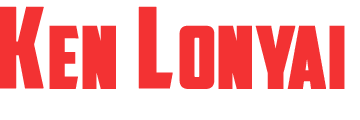
UX-CX Profitability Continuum
“The Lonyai Principle”
As the creator and evangelist of the UX-CX Profitability Continuum, a client was so smitten with its truths, that they “renamed” it “The Lonyai Principle.” That’s a great honor for me, so I humbly offer the alternative naming convention here.
Profitability is driven by UX. There’s no magic to it. There’s no deviation from it. People purchase from and return to the places where they get the least aggravation and most happiness. So it’s a self-fulfilling cycle: happier customers lead to more profit.
Intuitively, it can be argued, that understanding the market, good product design, strong management, proper cost control, intelligent pricing structure, effective sales/marketing, and efficient distribution determine profitability. They are underlying factors, but to the consumer (the one who exchanges money for a service or goods), the experience is what truly matters. From their perspective, the complex behind-the-scenes effort to get to their desired outcome is irrelevant.
As the example graph illustrates (above), when UX rises or falls, net earnings principally keep pace. But so often, this critical connection is misunderstood or neglected. In some cases, it’s sabotaged in an attempt to cheat the UX-CX Profitability Continuum and achieve short-term gains. That does work, but the long-term boomerang effect is disastrous.
Understanding the UX-CX profitability Continuum
A decision is made to increase short-side profits by means of one or more of the Dirty Deeds (see list). The impact point is where the “divergence” vector intersects the graph lines. The green shaded area between profit and UX illustrates the tension created by breaking the correlation – the danger zone. Profits rise, but they do so sacrificing customer happiness. Customers know what they want, realize what’s happening to them and in time, they migrate away (partially or fully) to providers that meet their needs. That trend is illustrated by the dive UX takes between the “divergence” and “correction” vectors. So, the danger zone can be understood as the inescapable force that causes profits to plunge en route to the point of correction—if a correction occurs.
The illustration is one of multiple scenarios. Many a shuttered company discovered the danger zone too late and couldn’t pull out of the dive. In fact, it’s not uncommon for a company to panic and pile on additional Dirty Deeds in a misguided attempt at damage control once their missteps are recognized. However, this graph illustrates a scenario where the company reverses and ultimately levels off from the slide. The turning point is where the “recovery” vector crosses the UX line. Nevertheless, there’s a severe penalty paid.
Profit levels post “recovery” are typically far lower than pre “divergence.” Profits have tanked in comparison to where they were before the decision to break the essential UX profit relationship. So long term, profits are worse off than before. And, the effort to get back to the level where things started is far more challenging and costly than to have originally focused on improving UX and organically pulling profits upwards in the process.
Unfortunately, this is not an uncommon scenario. It has many potential triggers, most frequently the wrongful premise that if increased sales are difficult to obtain, cutbacks will yield the same net effect more readily.
Another motivation comes from executives at the top of the corporate ladder and their desire to look good and increase compensation while they are at the helm.
When near-term thinking outweighs the future, long-term viability and profits can get short-sided. Then, it’s inevitable that the siren song of the Dirty Deeds becomes irresistible.
Closing Thoughts
If the scenario was reversed and a company forced UX upwards without regard for profitability, that company would not be long for this world. Pushing user experience to its limit without regard to the cost is unsustainable and the short track to failure too. I doubt that such a scenario has happened much in the course of business history, so, enough said.
Finally, when I work with a company to increase profits by developing a comprehensive, long-tail UX strategy, my mandate is to prevent the existence of the danger zone, where profits ultimately ALWAYS plummet. Even so, if your company is already there and there’s still space under the curve, I can help.
Dirty Deeds
Cutting Product Quality
This can be done any number of ways, outsourcing/offshoring production, using inferior materials, lowering quality control standards, etc.
Raising Prices Arbitrarily
Simply, sticking it to the purchaser and raising prices based on a money grab or other justifications beyond any real increased cost of doing business.
Eliminating Benefits/Features
Essentially, giving less for the same price. Less functionality, or as happens with food products or CPG items, where the package size remains the same, but the weight or volume is stealthily reduced.
Reducing Support
An easy cost-cutting measure that can rapidly infuriate customers. Cutting back access to support, eliminating channels, understaffing, offshoring, poorly automated systems, etc.
Broken Promises
Claims and policies that are unsupported are a fast track to trouble. Examples include exaggerated feature capabilities, toothless warranties, poor durability, returns hassles, etc.
